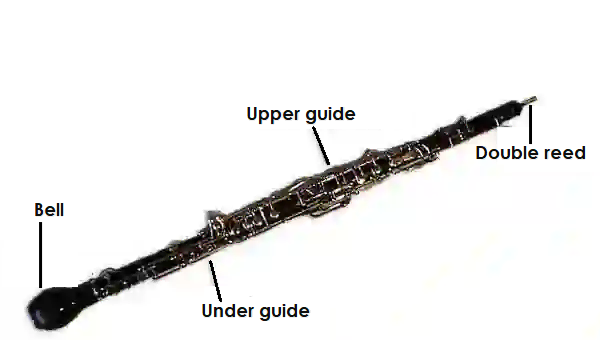Construction and function » Cor anglais » Philipp Dangas
Construction and function of the Cor anglais
The English horn is a woodwind instrument, the alto instrument of the oboe family. It has its place in the symphony orchestra.
Structurally, the English horn is an enlarged oboe and only has a few special features related to the sound. The overall length (Heckel design) is 90 cm including the mouthpiece. The instrument does not end in a funnel, but has a pear-shaped bell, also known as the "love foot"..
In combination with the curved connecting piece between the reed and the body of the instrument, called the "S-Bogen", this gives it a covered, warm and less buzzing sound. The sound is produced by a double reed. Because the reeds are longer and wider than the oboe reeds, the sound production of the English horn is easier than that of the oboe.
Download size: 153 kilobytes
Table summary of the functional principle of the woodwinds
This table shows the most important data on the functional principle of the woodwind shown. Mouthpieces, reeds, tone holes and flaps briefly described. The term overblowing technique is also defined.

The construction of the Cor anglais in large representation
- Double reed
- Upper guide
- Under guide
- Bell
Internal search function
| Name | Value | Delete |
|---|